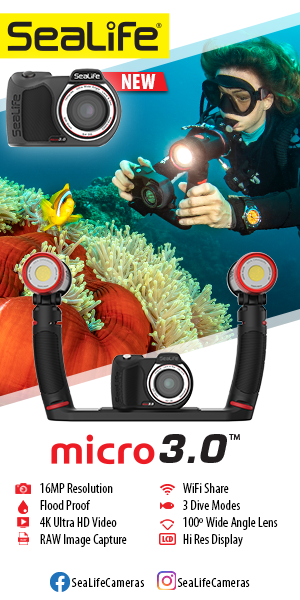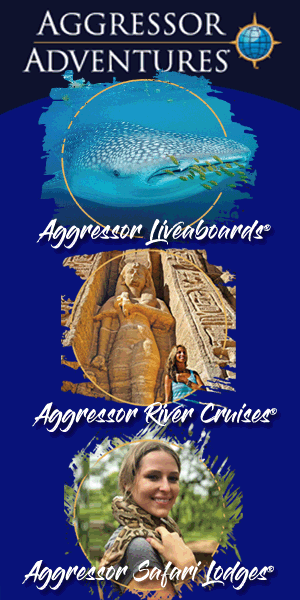The second-largest island in Hawaii, Maui provides divers with phenomenal diving and a variety of other activities. The scenery is stunning, the beaches and ocean inviting. In short, Maui offers opportunities for self-indulgent pleasures ranging from adrenalin-pumping adventure to total relaxation. While it might seem unnecessary to point out, Maui, like all of Hawaii, is part of the United States, and this makes traveling there for U.S. citizens exceptionally easy, as no passports, immigration forms or inoculations are needed. There is also a certain comfort in knowing you are in a place where everyone speaks English, spends U.S. dollars, drives on the right side of the road, and is governed by the same constitution you are.
Topography and Climate
Maui’s unique geology, topography and climate combine to produce a diversity of landscapes. Like the rest of Hawaii, Maui was born of volcanic activity. However, in Maui’s case several volcanoes were so close to each other that the lava flows on their flanks overlapped, and the result is a single island. The isthmus is Maui’s central valley, and that gives rise to the nickname “The Valley Isle,” which lies between two volcanoes. The older volcano formed the western side of the island and produced the dramatic West Maui Mountains where the tallest peak, Pu’u Kukui, stands 5,788 feet (1,754 m) above sea level. Last active in the late 1700s, the younger, larger, volcano Haleakala (hah-lee-AH-kala) rises skyward to 10,023 feet (3,037 m) above sea level on the eastern half of the island. The eastern slopes of both volcanoes are cut with deep valleys and steep ravines that make their way toward the coast. Ultimately, the irregular topography and range of altitudes yields a variety of markedly different ecosystems and landscapes that range from sandy beaches, desertlike plains and hillsides, steep ravines, and moonscapelike, lava-encrusted wastelands to open slopes, lush farmland and rain forests. In addition to providing spectacular scenery, the volcanoes are also major factors in determining weather conditions, which vary according to location, elevation, and whether a particular place faces into or away from the prevailing northeast trade winds. With few extremes and cooling trade winds that tend to modify the heat throughout the year, the climate is generally very pleasant and consistent. It tends to rain a little more during winter months and is a little hotter and drier during the summer. One of the more appealing aspects of Maui’s climate is the rather small variation in air temperature over the course of a year. The average annual daytime temperature at sea level is in the mid-80s Fahrenheit (29-30 degrees Celsius), with the daily high reaching 90 F (32 C) only occasionally in some areas. In the dead of winter the highs at sea level only dip into the high 70s F (25-26C).
It is worth noting that these temperatures are for sea level. Climatic conditions vary more according to location on Maui than by season. If you drive into “upcountry,” the local term for the majestic countryside that encircles Haleakala it is not uncommon for wintertime lows to dip into the 40s F (5-9 C). No matter how dry it is along the coast, there is often at least a partial cloud cover and the ever-present possibility of a drizzle in upcountry where you will find the charming communities of Makawao and Pukalani. Divers will want to take precautions regarding the altitude in upcountry to avoid decompression illness. The amount of annual rainfall varies more according to location than season, with an annual average of 7-20 inches (18-51 cm) in coastal areas on the island’s leeward side to amounts in excess of 300 inches (762 cm) along the lower windward slopes of Haleakala. A handful of strong storms tend to occur most often between October and March, but fortunately, hurricanes are extremely rare.
History
The human history of Maui shares much in common with the people of the entire Hawaiian archipelago. The Hawaiian chain is believed to have been uninhabited until about A.D. 30 when the first Polynesians arrived by canoe. Their descendants are thought to have lived in peace for roughly five centuries. Somewhere around A.D. 1200 the Tahitians arrived, and they soon began to subjugate the local population, and they introduced a body of laws known as the kapu that governed society and the natural world. According to Hawaiian legend, the island of Maui was named after the demigod Maui, who supposedly lifted the island from the sea. The modern history of Hawaii began in the mid-1700s. The Hawaiian ruler King Kamehameha took residence in the community of Lahaina in West Maui after conquering the island in 1790. He later made Lahaina the capital. In late November 1778, the British explorer Captain James Cook became the first European to see Maui, although he never set foot ashore. The first European to venture onto the island was the French Admiral Jean Francois de Galaup de La Perouse, who landed on May 29, 1786. More Europeans, Americans and Russians soon followed. Of course, various national governments from these competing foreign lands had conflicting ideas regarding the value of Hawaii to their homelands. Beginning in 1823 droves of missionaries from New England also arrived in Maui, and they chose to settle first in the capital of Lahaina. The missionaries not only greatly altered the culture by doing things such as banning the hula, clothing the locals and starting the first school, they also brought a host of previously unknown diseases. It is generally believed that the population through- out the islands was roughly 500,000 when Captain Cook first arrived, but fewer than 50,000 by 1875. From 1840 to 1865, the height of the whaling era, Lahaina was a major whaling center. Although annexation was opposed by some, the United States annexed the Hawaiian Islands in 1898. Maui was used as a staging center and training grounds for American troops during World War II. In 1959 Hawaii became the 50th state in the United States.
The Diving
Some divers consider Hawaii only as a stopover on their way to other Pacific destinations. But many experienced divers have come to realize that Hawaii and the island of Maui are as far as they need to travel to enjoy some fantastic diving. Boat diving is very popular, and there are a number of exceptional beach dives on both the west and south sides of the islands where entries are easy and the swim to the dive site takes only a few minutes, and where Maui’s legendary visibility often exceeds 100 feet (30 m). Because Hawaii is often thought of as a tropical paradise, it sometimes surprises people to discover that the sea is not as warm as it is in many tropical destinations, and many divers find 5-mm-thick wet suits, hoods and gloves desirable. Whether it is a cruise through a labyrinth of lava tubes filled with colorful creatures, the chance to see a whitetip shark or photograph a toothy moray eel peering out of its hole, there is no doubt that the diving in Maui has plenty to offer divers of all experience levels. Dive sites such as the Cathedrals of Lanai where shafts of sunlight shimmer through openings in lava tubes producing the illusion of swimming in an underwater cathedral, and Molokini Crater, a national marine sanctuary where marine life is protected, are legendary in international diving circles. So is the fact that about 23 percent of the fish species that inhabit Hawaiian waters can only be found in Hawaii. This means that in Maui you will have an opportunity to see a lot of fishes that cannot be found in diving destinations outside of the state. Much of the diving on Maui is conducted from local charter boats.
Those who depart from the south end of the island often dive at Molokini Crater, while those who depart from the west end often dive in the protected waters off Lanai. The boats typically provide tanks, weights, divemasters and some food and beverages. Rental scuba gear is also available. Nitrox is available through many operators. A typical two-tank dive from the south side usually means getting underway around sunrise and returning about the time the mid-day winds begin to kick up. Operators on the west end often depart shortly after an early breakfast, and are more inclined to offer afternoon dives. Beach diving is very popular, but some shores are rocky, have steep shore breaks, or are prone to currents so it is best to go with a local operator who provides a dive guide. No matter where you dive off Maui you will want to keep a close eye on your depth gauge because the water is exceptionally clear and the drop-offs in many areas can be quite steep. At the same time it is also worth noting that there are many excellent dive sites in only 30-60 feet (9-18 m) of water.
Nondiving Diversions
As is the case on all of the Hawaiian Islands, trying to narrow the list of things in addition to diving that you want to do can present a serious but fun-filled challenge. Those who want to enjoy some physical activity can play golf on world-class courses, ride a rented bike down Haleakala, take surfing lessons, go horseback riding, ocean kayaking, snorkeling or hike through a rain forest. Some days you might prefer to drive to the summit of Haleakala or enjoy the scenic, 56-mile- (90-km-) long Hana Highway, a winding stretch of road that will take you through lava fields, old plantation towns, majestic forests and along various beaches. Or you can check out the historical petroglyphs at Olowalu. Other activities include taking a helicopter tour, getting pampered at a spa, shopping, visiting museums and other cultural sights, or spending time at the Maui Ocean Center. In the winter going whale watching where you will have a great chance to witness spectacular surface displays of humpback whales is always a thrill. Cocktail-hour sails and dinner cruises are also available. Polynesian dinner shows and luaus, including hula dancing are available nightly, for a vacation that is decidedly Maui.
Story by Marty Snyderman
Facts and Figures
Location: The island of Maui is toward the southern end of the Hawaiian archipelago northwest of The Big Island of Hawaii and southeast of Molokai.
Size: The second-largest of the Hawaiian Islands, Maui is 48 miles (77 km) long and 26 miles (42 km) wide at its widest point.
Population: 128,000
Population of humpback whales: More than 3,000 humpbacks winter in Maui. Beaches: 81 accessible beaches, 39 with public facilities.
Chief resort and hotel areas: In South Maui most resorts where divers stay are in Makena,Wailea and Kihei. In West Maui the resorts are in Lahaina and nearby areas, Ka’anapali and Kapalua.
Accommodations: Lot of choices, ranging from bungalows and condo rentals to traditional hotels and exclusive spas.
Time: Hawaii Standard Time is Greenwich meantime minus 10 hours.Maui is two hours behind Pacific Standard Time and five hours behind Eastern Standard Time.Hawaii does not observe daylight-saving time, so when daylight-saving time is in effect on the U.S. mainland, Hawaii is an additional hour behind.
Entry requirements: For U.S. citizens conditions of entry are the same as they are to cross state lines in the continental United States, thus no passport or immigration clearance are required. For non-U.S. citizens requirements vary according to whether Maui is the first port of entry into the United States. Canadian citizens only need a passport.
Getting there: The main airport is in Kahului near the center of the island. A number of major airlines offer direct service to Maui from both the U.S. mainland and from Canada.





